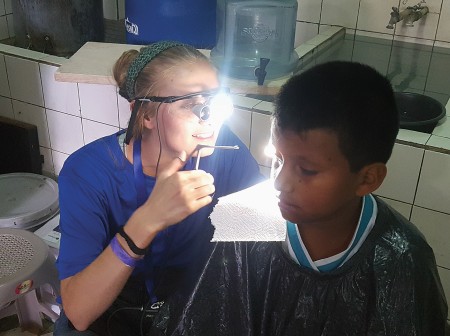Julius Lucks, a professor of chemical and biological engineering, and postdoctoral fellow Khalid Alam and doctoral candidate Kirsten Jung created a device to test water for 17 different contaminants. The technology, nicknamed ROSALIND in honor of DNA pioneer Rosalind Franklin, can assess water safety and quality with just a single drop. Using "molecular taste buds," when the test detects a contaminant, the tubes glow green.

Whether you’re walking over to the sink or miles away to a local source, you want to know ...

... is my water safe to drink? The challenge with water quality is you often can’t see — or taste — contaminants.

Using a method called cell-free synthetic biology, you can track contaminants such as heavy metals, like lead, or antibiotics, cosmetics and cleaning products.
ROSALIND’s powerful and programmable genetic circuits can sense if contaminants are present as well as detect contamination levels. The number of tubes that glow depend upon how much contamination is present.

We’ve gone to nature and found microbes that can naturally sense these things — and reprogrammed their molecular machinery. Now, in minutes, you can easily assess water quality and make informed decisions.



Reader Responses
This sounds like a great product. Lately, there’s been much written about PFAs (excellent journalism by the Chicago Tribune) in the water (and elsewhere). Does this device report on that?
—Barbara McStowe '72, Wilmette, Ill., via Northwestern Magazine
Great question! PFAS is certainly a contaminant of high priority. At the moment ROSALIND uses naturally occurring biosensors – proteins found in bacteria that can sense contaminants – to detect molecules in water. This covers things that natural bacteria have evolved to sense, which turns out to be many things that are of concern to us (ex: heavy metals, nitrates, some pesticides, etc.). However, PFAS is a highly synthetic class of chemicals designed specifically to be chemically inert meaning that nature does not do a good job of sensing them – yet. Researchers are actively searching for microbes that can break down PFAS and once found it’s highly likely those microbes will have PFAS sensors that can then be used in ROSALIND. So while ROSALIND can’t sense them now, it should be able to in the future!
—Julius Lucks Evanston, via Northwestern Magazine
No one has commented on this page yet.
Submit a Response